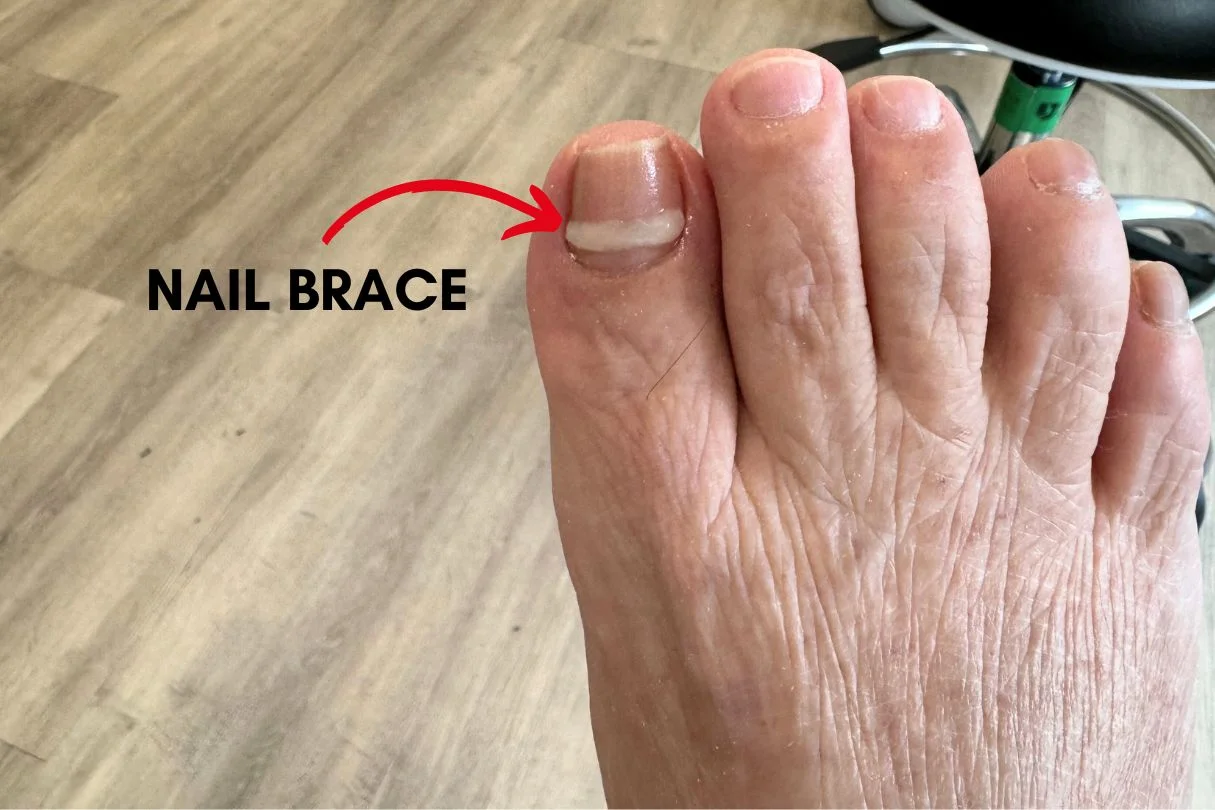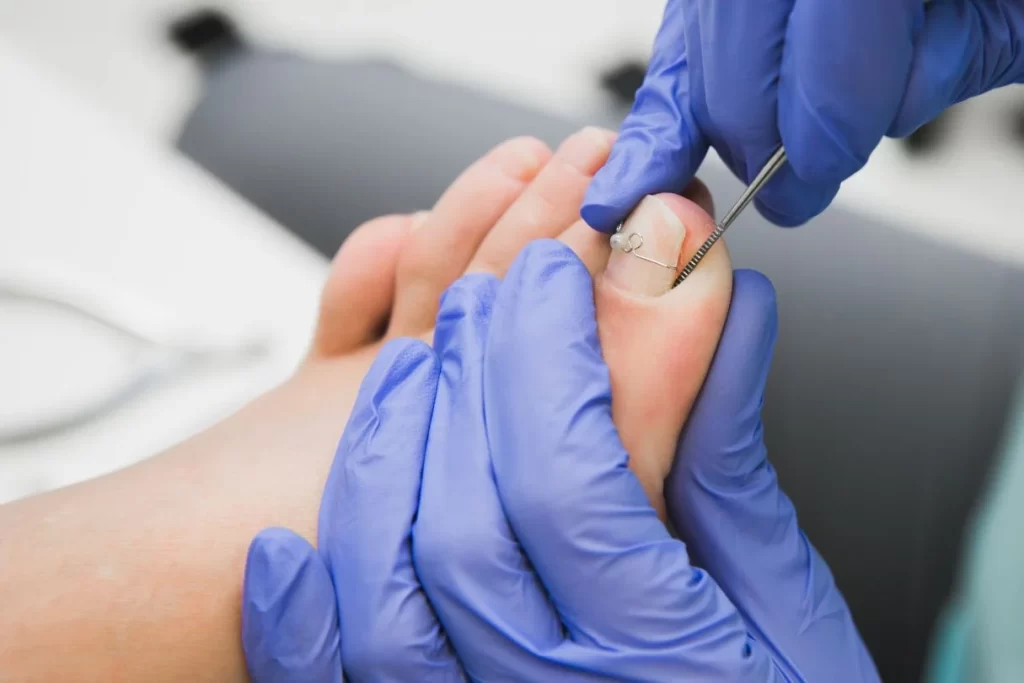Ingrown toenails can be a painful and recurring issue for many individuals. It often requires early effective treatment to alleviate discomfort and prevent further complications. One innovative ingrown toenail treatment approach gaining attention recently is nail bracing or nail braces.
But does it really work? Let’s find out what nail braces are and their effectiveness in managing ingrown toenails!
Understanding Ingrown Toenails
An ingrown toenail occurs when the edge of the nail grows into the skin surrounding the nail bed, leading to pain, swelling, and potentially infection. Common causes include improper nail trimming, trauma, or inherited nail structure.
What is a Nail Brace?
Nail bracing is a noninvasive ingrown toenail treatment method that corrects the nail shape without the need for surgery. It involves applying a thin strip made of compound polymer to the affected nail. This device exerts gentle pressure to gradually lift the nail’s edge away from the skin. This reduces the tendency for the nail to grow into the surrounding tissue.
How Does Nail Bracing Work?
The principle behind nail bracing is to reshape the nail over time, encouraging it to grow outwards rather than into the skin. The nail braces are carefully applied by a trained podiatrist and are comfortable and discreet. They work by:
- Lifting the Nail: By lifting the edge of the ingrown nail, the brace helps to relieve pressure on the surrounding skin, reducing pain and inflammation.
- Promoting Correct Growth: As the nail grows, the brace guides it to grow in a straighter, healthier direction, minimizing the risk of recurrence.

Effectiveness of Nail Bracing
Research and clinical experience suggest that nail bracing can be an effective treatment option, especially for mild cases of ingrown toenails. Benefits include:
- Non-Invasive: Unlike traditional surgical methods, nail bracing is non-invasive and does not require cutting or removal of the affected nail.
- Minimal Discomfort: Patients typically report minimal discomfort during and after the application of the brace.
- Promising Success Rate: When used appropriately and in conjunction with proper nail care techniques, nail bracing has shown good results in correcting ingrown toenails and preventing their recurrence.
Is Nail Bracing Right for You?
Nail bracing is most suitable for individuals with mild to moderate ingrown toenails who prefer a non-surgical approach or wish to avoid the recovery period associated with ingrown toenail surgery. However, it may not be suitable for severe cases or those with underlying health conditions affecting the feet. It may also not work well in cases complicated by nail fungus.
How to Get Started
If you are experiencing discomfort from an ingrown toenail and are considering nail bracing as a treatment option, it’s essential to consult with a qualified podiatrist. During your consultation, the podiatrist should assess your condition, discuss your treatment goals, and determine if the treatment is appropriate for you.
Conclusion
Nail bracing offers a promising alternative to surgical intervention for treating ingrown toenails, providing a non-invasive solution with long-term results. By addressing the underlying nail growth pattern, nail bracing can help alleviate pain, reduce inflammation, and prevent future occurrences of ingrown toenails.
If you’re seeking relief from painful ingrown toenails, consider nail bracing as an option. Consult our Podiatrist for advice today!

Jackie Tey
Chief Podiatrist, B.Pod(Hons). Your foot and lower limb specialist passionate about raising awareness for foot and lower limb health.





